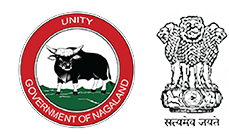MONYU & PAANGMO - PHOM TRIBE
- Monyu
-
The Phoms have four major festivals each having unique significance. They are MONYU, MOHA, BONGVUM and PAANGMO.
MONYU
Monyu, the most popular and biggest festival falls in the month of April every year soon after the sowing season. The festival is celebrated for six days beginning from 1st to 6th April every year. It also marks the end of winter and the beginning of summer or monsoon. A day or two prior to the festival the green signal of the dawn of festival is made by beating log drums with a distinct tune synchronized purposely for the event, traditionally named "LAN NYANGSHEM".
The Priests or the village elders perform a ritual and predict what the forthcoming festival would be- a blessing or a curse. In case the prediction shows a sign of danger, the villagers are warned to be careful during the festivity. Monyu is the time to bid farewell to the ongoing year and herald the dawn of the New Year. It is also the time of prayers and dedication for the sprouting crops that are already sowed. The main feature of the Monyu is the occasion when the male members of the family show love and renewal of affectionate feelings towards their married daughters or sisters by presenting them the purest of the rice-beer and specially prepared food. Such conduct reflects the general status of the Phom women that "they are respected and honored". Planning and decision relating to community welfare to be implemented throughout the year are also decided during the festival.
The six day long festival follows a circle of ritual and activities which may be categorized day ¬wise as the following:
The first day is the day for overall preparation. Besides preparing of domestic chores, every household goes to collect wrapping leaves and bamboos, which is called “SHONGTEN-LAIPHEN”.
The second day is for compulsory brewing of all kinds of rice-beer.
The third day is meant for the varying age-group from oldest down to the youngest. They gather together and feast amidst dancing and merrymaking. Thus the day is named “Aiha Okshok”.
The fourth day is coined as “Chingi Okshok”which practically means general festivity and also the day of arrival of guests from neighboring villages.
On the fifth day, parties of young and old men and women wear their respective colorful costumes, keep themselves busy, eating, drinking, dancing, inviting friends, kith and kin ... making each moment of the day memorable and joyous, which is called “Paangmohah”.
The sixth day and the last day is another remarkable day. The elderly people feast by exchanging jug of purest rice-beer and meat. The younger ones both boys and girls stroll out to the outskirt of the village and feast together. The most common game played during the last day of the festival is “Swing” made out of wild rope locally called “SHAKOK VU”. It is to be noted that the whole process is carried in a ritualistic manner.
- Paangmo
-
The festival called Paangmo is another important event of the Phoms. It is celebrated in the month of November which stretches over three days. At this festival, the whole surrounding of the village is cleaned. Wells and homes are repaired and decorated. Every household and varying age-group brew special rice-beer called “YU” and kill animals. Parents present gifts commonly meat and prepared food to their daughters already married (DOIDAIBU YUKHA) who also reciprocate in the like manner with ardent“Love and Respect”.

